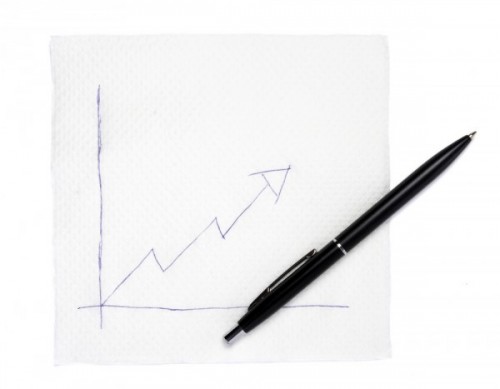
Two years ago, a friend began a company turnaround. His first task: tell his executive team they would not receive bonuses due to missed goals, despite growing revenue and EBITDA.
The team had never met face-to-face. Some had been through three management changes; others were new hires. My friend had a daunting challenge and asked for help building his team.
In preparation, we agreed upon the following principle: high impact teams result from meaningful work, not team-building exercises.
We met twice a year over two years. During that time, this team increased sales 50% and EBITDA 300%.
The Model We Used to Build the Executive Team.
Meeting 1 Outcomes – Strategy and Working Agreements.
The CEO had an overall vision for the turnaround. The team, shell-shocked from bad news, needed to hear it. Because they needed to jell quickly, we wanted them to overtly agree on how they would work together.
At the first meeting, we:
- Defined the culture they wanted.
- Described the strategy using four key words and personal stories.
- Determined specific actions for the next 180 days.
- Agreed upon how to work together.
Meeting 2 Outcomes — Momentum, Working Styles and “Yes!”
In the first 180 days, the team agreed on a new budget, met five new distributors, introduced three products, and hit their targets.
In this second meeting, we:
- Celebrated a successful quarter.
- Identified their preferred working styles and examined ways to adapt to their colleagues’ styles.
- Explored how to work with existing assets to increase profitability.
Meeting 3 Outcomes: A Visual Vision.
People crave meaning. The most successful companies are clear on what they stand for and why. Now that the team had worked together for a year, they were ready to clearly articulate their purpose.
Here, we summarized their:
- Core Values – what they stand for.
- Core Purpose – what they exist to do.
- Aspirations – what they want to be.
- Visual Vision – what the future looks like, in hindsight.
Meeting 4 Outcomes: Focus, Goals and Connection.
The team was winning, clearly focused on a differentiator, and had resolved factory capacity to increase profits. The CEO wanted them to sustain progress into the new year, create long term impact, and strengthen their connections as a high-functioning team.
So we:
- Examined how they accomplished what they did and how to sustain it.
- Created steps to achieve their personal goals with the differentiator.
- Applied strategies to stay focused.
The CEO had inherited this team. Using a thoughtful structure, we created an experience that helped the team jell.



